The Ultimate Shou Sugi Ban Charred Timber Guide

Welcome to our definitive guide to Shou Sugi Ban timber, a technique that transforms natural wood into a stunning architectural masterpiece. Shou Sugi Ban, originating from ancient Japanese craftsmanship, involves charring wood to enhance its durability, resilience, and aesthetic allure.
In this guide, we’ll aim to explain why we char our Australian hardwoods, how we strive to maintain the best charring method in the industry and we answer plenty of questions around charred timber and its architectural application. If you’re wanting to know everything about Shou Sugi Ban charred timber, this guide is a great place to start you off.
Here is what we will cover:
- What Shou Sugi Ban charred timber is
- What timber species we char at Mortlock
- How to maintain Shou Sugi Ban timber
- How to deal with charred timber cladding rub off
- How much Shou Sugi Ban charred timber costs
- Where Shou Sugi Ban charred timber can be used
Let’s get into it!
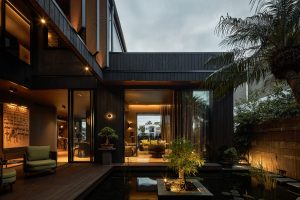
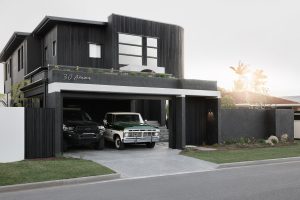
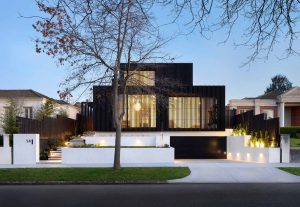
What is Shou Sugi Ban?
Shou Sugi Ban, also known as Yakisugi, is an ancient Japanese wood preservation technique that involves charring the surface with fire, without fully combusting the timber.
This process yields a striking ebony carbon coating that not only enhances the timber’s aesthetics but also provides exceptional protection. Surprisingly, charring strengthens and fortifies the timber, making it more durable in the long run. The carbon layer, complemented by an oil coating, forms a robust barrier against moisture, rendering it an excellent choice for outdoor applications.
Originally, Shou Sugi Ban was primarily used on Japanese Cedar. However, contemporary applications have expanded to various hardwood timbers, yielding outstanding results. The method entails precision charring using our specialised machinery, followed by controlled cooling and an oil coating. The final appearance can be tailored based on the type of timber selected and the coating applied to it.
Shou Sugi Ban timber species
While Mortlock Timber offers the most consistent charred timber on the market, you should still expect to see varying levels of charring on the surface of the boards.
When considering the application of the Shou Sugi Ban technique, it’s essential to select the right timber species to achieve optimal results. The four timber species we char at Mortlock Timber are jarrah, spotted gum, iron gum and burnt ash. Each of these timber species offers distinct visual and structural qualities, making them prime candidates for applications where both aesthetics and durability are paramount.
As timber is a natural product, the hardness, grain and crackle of each piece of timber varies. While a high level of consistency and quality is important, variations in Shou Sugi Ban texture form part of the natural beauty of the product. Indeed, architects and designers are drawn to Shou Sugi Ban for its distinct aesthetic and textural beauty.
Below are some example images of what level of texture variation you should expect to see.
Mortlock Timber has selected these four timber species based on the results of thorough testing, exploring the best type of timber to char. When we have tested and tried pine, cedar and other softer timbers. These tests have revealed that the charred layer tended to split or chip off very easily.
IRONGUM SHOU SUGI BAN
Often dominating plateaus, tablelands and slopes in open forests and woodlands, irongum is native to eastern Australia. Irongum is distinguished by its smooth-barked upper branches and discolorous leaves.
This timber is extremely durable, with heartwood ranging in color from light to dark red. Once applied with a Shou Sugi Ban technique, irongum’s interlocked grain emerges through the char layer. Irongum is perfect for our charring process as we are able to achieve a thick char layer with a crackled surface (reminiscent of a crocodile), while still highlighting the natural features of the native hardwood.
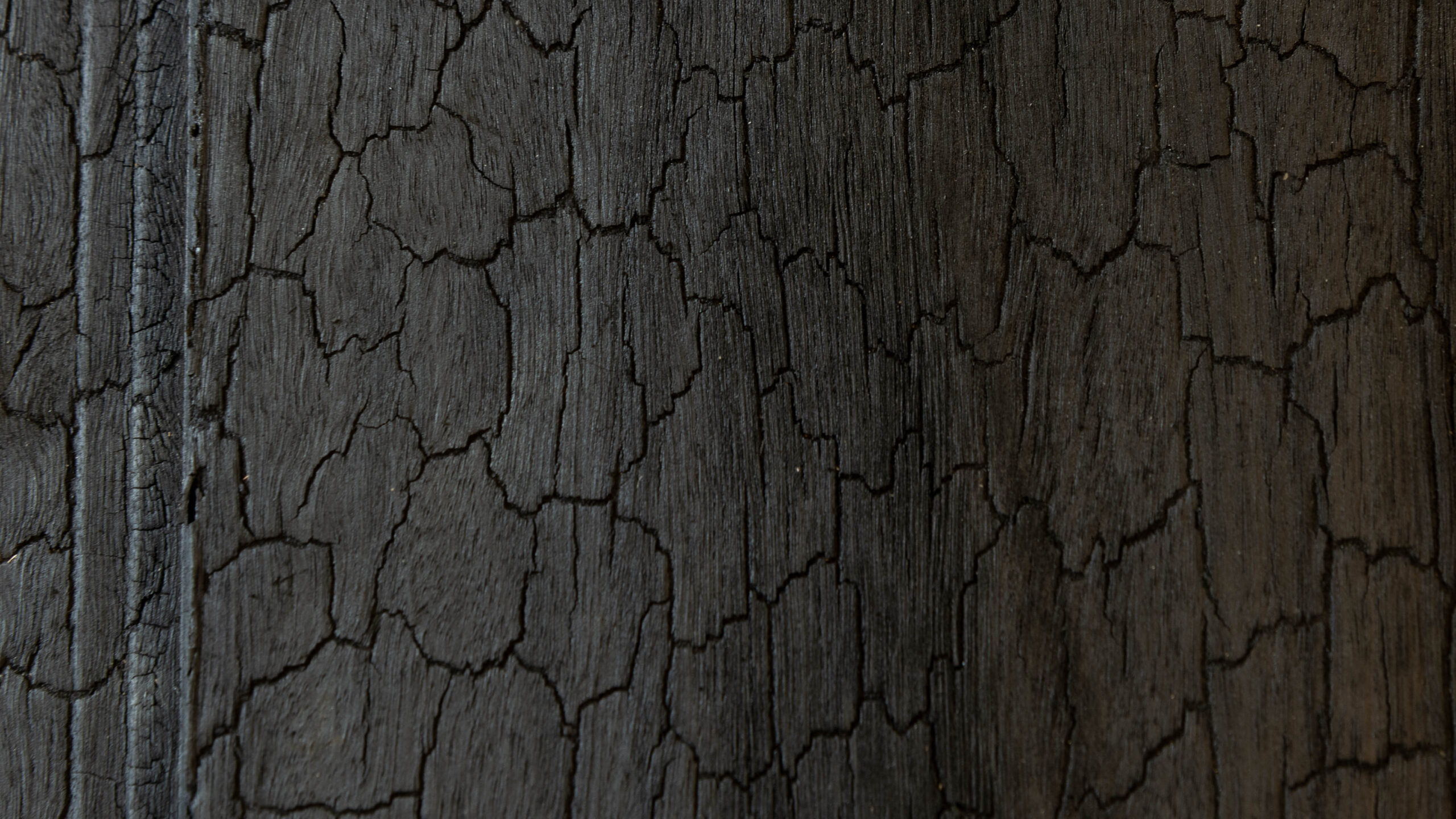
BURNT ASH SHOU SUGI BAN
Burnt ash is thermally modified American ash, a strong and resilient hardwood timber grown predominantly in North America. The chemical-free thermal modification process uses heat and steam to improve the durability and rot resistance of the timber. Essentially, cooking the timber.
Burnt ash is one of the best timbers for Shou Sugi Ban, due to its high stability and relatively low density. Compared to Australian hardwood timbers, burnt ash can achieve a deeper char layer, reducing maintenance requirements and improving the durability of the timber.
Burnt ash, with its elegant pale complexion, takes on a refined and contemporary aesthetic when treated with the Shou Sugi Ban technique, making it our premium option at Mortlock Timber.
The photos below showcase the variation in Shou Sugi Ban texture you can expect when using Burnt Ash timber.

SPOTTED GUM SHOU SUGI BAN
Spotted gum, revered for its durability and distinctive grain patterns, harmonises exceptionally well with the charring process, creating a striking visual impact. Due to its naturally high fire-resistant properties, charred spotted gum battens and cladding are often used in bushfire zones where BAL 29 is required.
This timber is not as stable as burnt ash and therefore cannot achieve the same depth of char and requires more maintenance than burnt ash over time.
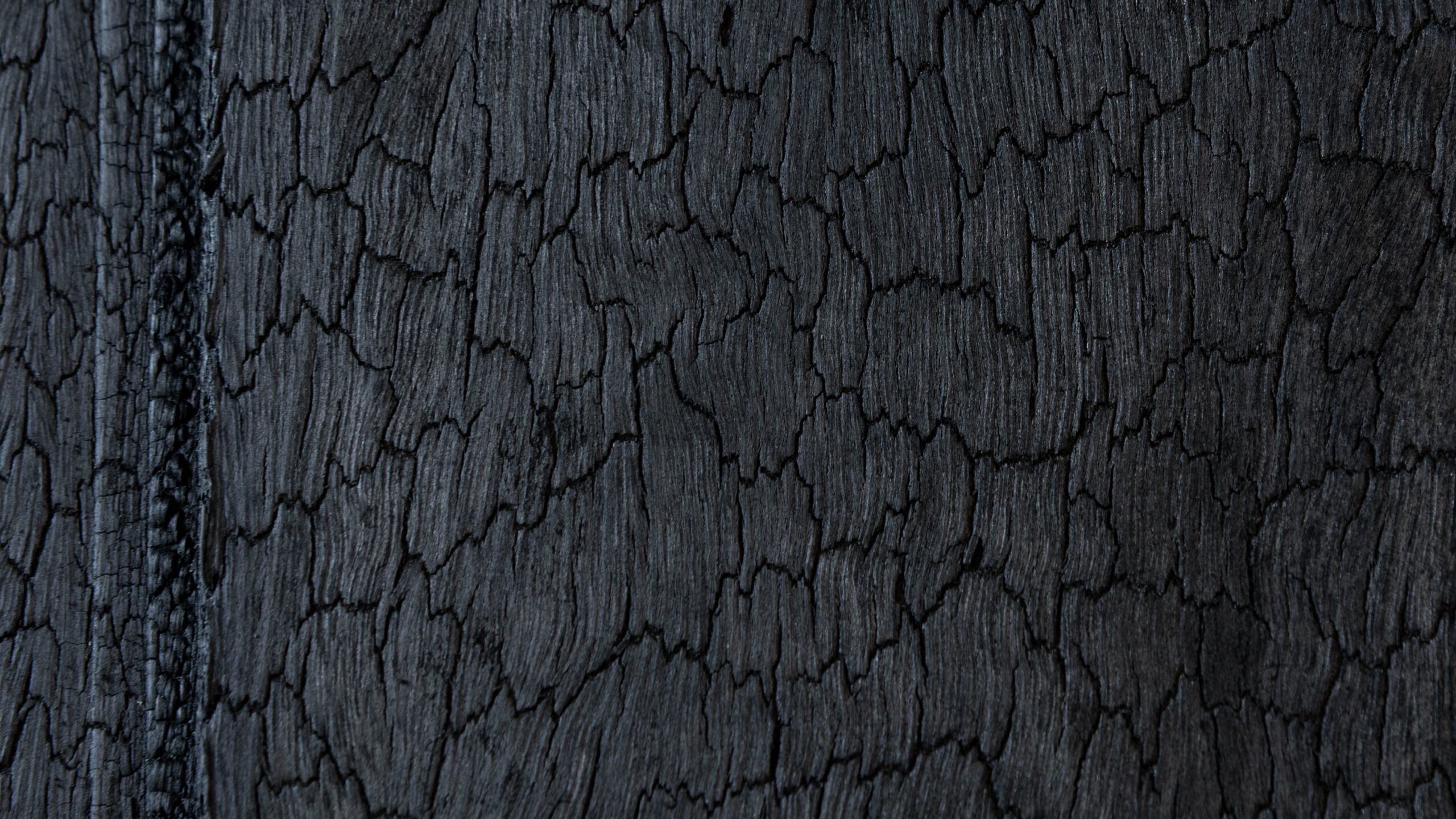
JARRAH SHOU SUGI BAN
Jarrah, known for its rich, deep red hues, undergoes a stunning transformation with Shou Sugi Ban, resulting in a unique blend of charred texture and vibrant coloration.
Jarrah is a cost-effective timber which produces a beautiful result when put through the charring process. Jarrah performs second to Burnt Ash, allowing a deeper penetration of the char layer and reduced maintenance needs over time. Charred jarrah cladding and battens can be used in bushfire zones where BAL19 is required.
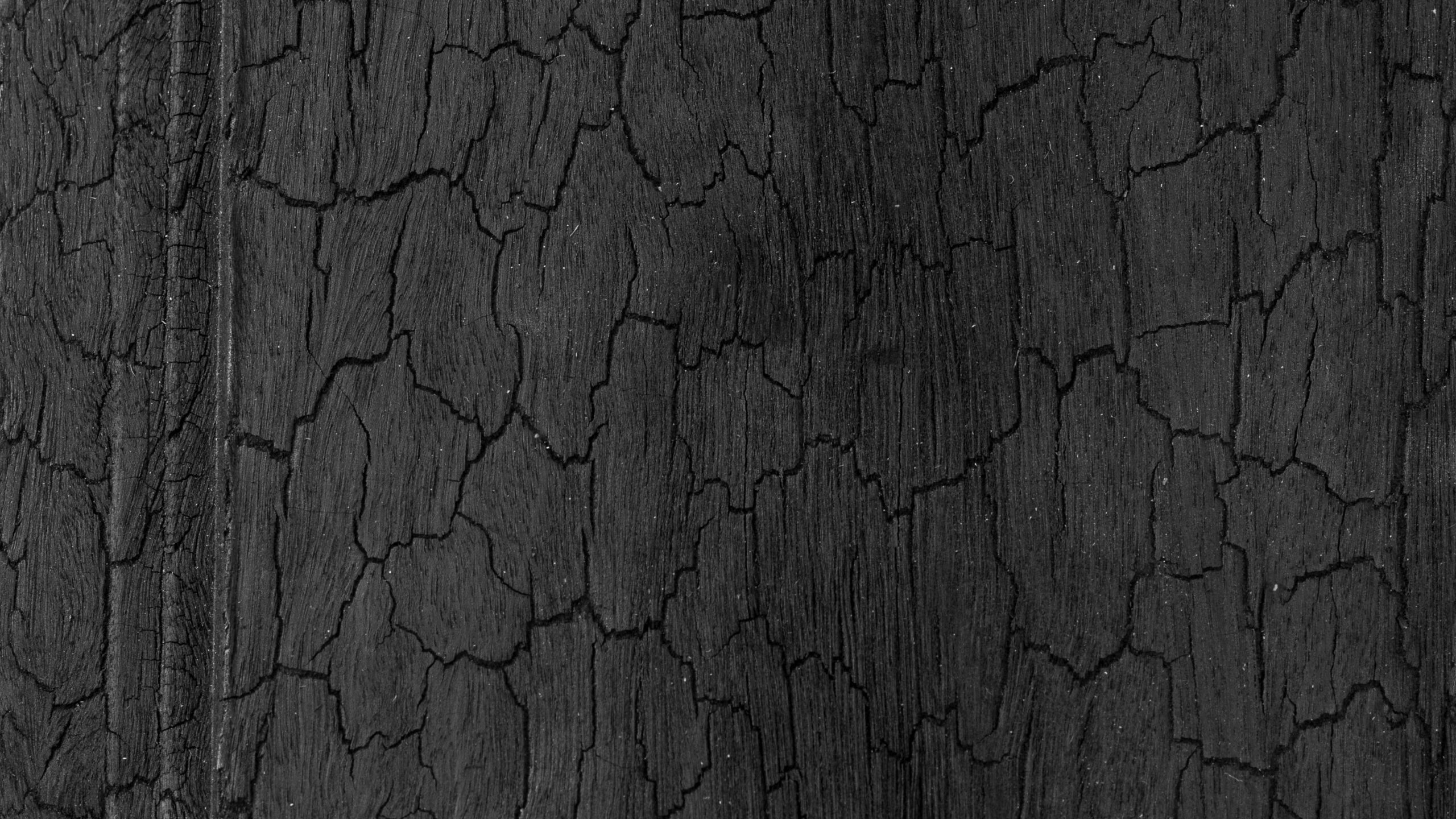
Do you need to maintain Shou Sugi Ban timber?
While many companies claim you do not need to paint or maintain Shou Sugi Ban timber cladding, this is not true, if you were wanting your Shou Sugi Ban cladding to look the same as the day it was installed, appropriate maintenance is required. So how long does Shou Sugi Ban last?
Any timber exposed to the weather will need maintenance at some point. A benefit of Shou Sugi Ban or charred timber, is that it does last longer without maintenance than un-charred timber. The charring process at Mortlock Timber gives the timber a natural layer of protection.
At Mortlock Timber, we will factory-coat your timber before it is sent out to site. This will provide the timber with its first layer of protection.
Once installed, it is recommended to apply a second coat of oil. If the charred timber is coated with Cutek oil, it is recommended to apply a third coat, three to six months after installation. Following that, it is recommended to recoat the timber up to every three to five years, depending on the level of weather the timber is exposed to.
For WOCA Exterior oil, this two-coat application can last up to two years, before it needs to be evaluated based on the project’s variables. These variables include exposure to the elements, location, elevation and where on the project the timber has been installed. If the charred timber has been installed internally, only a second coat of WOCA Exterior is recommended with some monitoring over the next two years.
As standard, Mortlock supplies the timber cladding pre-oiled with Cutek Extreme CD50 Black Ash oil. Factory applied WOCA Exterior oil is an optional extra, while it costs more than Cutek, it typically lasts longer.
Read More: How to maintain Shou Sugi Ban charred timber for maximum durability!
Does Shou Sugi Ban timber rub off?
Yes, it does. However, this can be prevented and removed. Shou Sugi Ban coated with Cutek Extreme CD50 will rub off, this is loose particles of char on the surface of the timber. Once the timber cladding has been out in the weather for two to three months, the weather will wash the loose particles off the timber cladding and the charred, black rub-off eventually goes away.
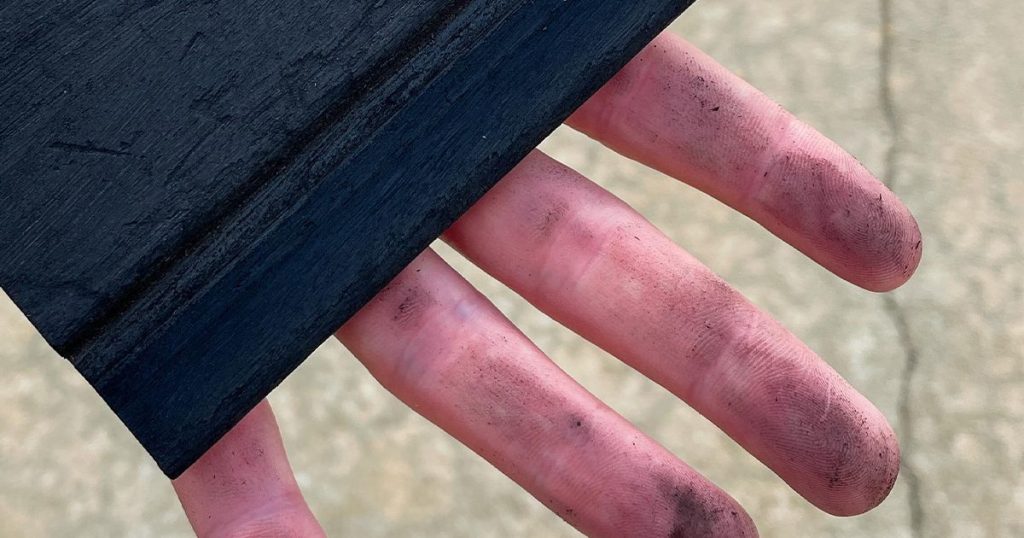
If other charred timber cladding options outside of Mortlock Timber are claiming that there is no rub off, the char layer will not be thick enough or they are using a different coating.
If you are looking for Shou Sugi Ban timber cladding for interiors or areas that are not exposed to weather, Mortlock Timber recommends using WOCA Exterior oil. This coating binds the char layers together and eliminates the rub-off on internal projects. This means, no loose black particles are coming off the timber onto your hands and clothes Mortlock Timber supplies the cladding factory pre-coated with WOCA Exterior oil, once installed a second coat is recommended to completely seal the cladding from rub-off.
What sets us apart when it comes to Shou Sugi Ban charred timber.
We take pride in our meticulous attention to detail during the charring process, which imparts a remarkable natural timber finish visible in numerous designs across Australia.
We at Mortlock Timber put a lot of weight and focus on the char depth; it’s paramount. Inconsistent charring results in irregular weathering, defeating the purpose of Shou Sugi Ban charred timber cladding. That’s why, at Mortlock Timber, we ensure a substantial char depth on the timber pieces emerging from our Western Australia facilities.
We guarantee a smooth, uniform finish by charring all four sides of a timber board, eliminating any inconsistencies. Charring the bottom of the timber prevents cupping, ensuring an easier installation process and minimizing the natural movement of the timber over the years.
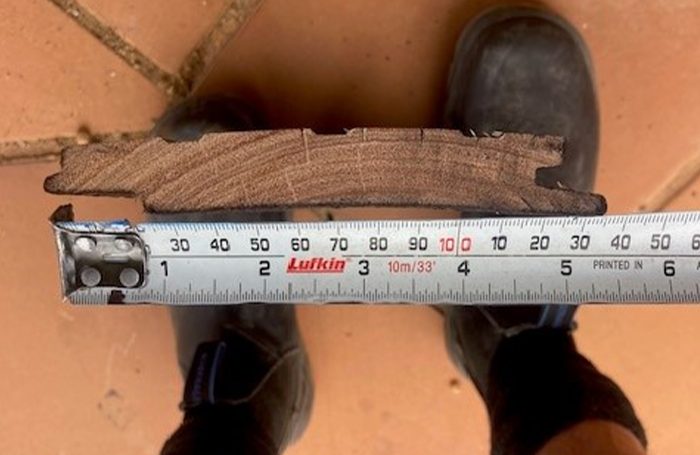
The above image is an example from a competitor in the timber industry of a timber board cupping. This is due to uneven charring and/or residual flame singeing the bottom of the board. Uneven charring leads to the cupping of a timber board, resulting in the timber boards being pushed outwards.
Here is Brent from Mortlock Timber to talk about about why we char all four sides of the timber.
In addition, we implement an effective practice of charring the tongue and groove of the timber pieces. This meticulous attention to even charring at the smallest details ensures consistent weathering, preventing clients from ending up with a patchy, stripey or unevenly charred timber wall.
The timber species we select to char with our Shou Sugi Ban technique, are the ones that work. As different timbers behave differently, we don’t char a mix like some others in the industry. If you are asking for charred spotted gum, you will get charred spotted gum – not spotted gum with another timber species such as ironbark.
How much does Shou Sugi Ban charred timber cost?
In the realm of Shou Sugi Ban charred timber, pricing is shaped by three key factors: timber type, board size, and finish. These variables contribute significantly to the final cost of your project, along with installation and labour expenses. An important note to remember is that we at Mortlock Timber, solely focus on manufacturing and do not provide installation services.
The timber species selection—jarrah, spotted gum, irongum, or burnt ash—dictates both the cost and the resulting quality of the charred finish.
Burnt ash, the most expensive and premium of the three species, yields the highest-quality and heaviest char layer. Spotted gum, with excellent fire resistance, often fits where a BAL 29 fire rating is required. Jarrah, the most cost-effective option, offers a lighter char and meets a BAL 19 fire rating.
Prices for the standard 19mm wide options vary across these timber species, ranging from approximately $255 to over $350 per square meter with a standard Cutek Extreme CD50 with Black ash finish. These figures serve as estimates, urging project-specific inquiries for accurate costing.
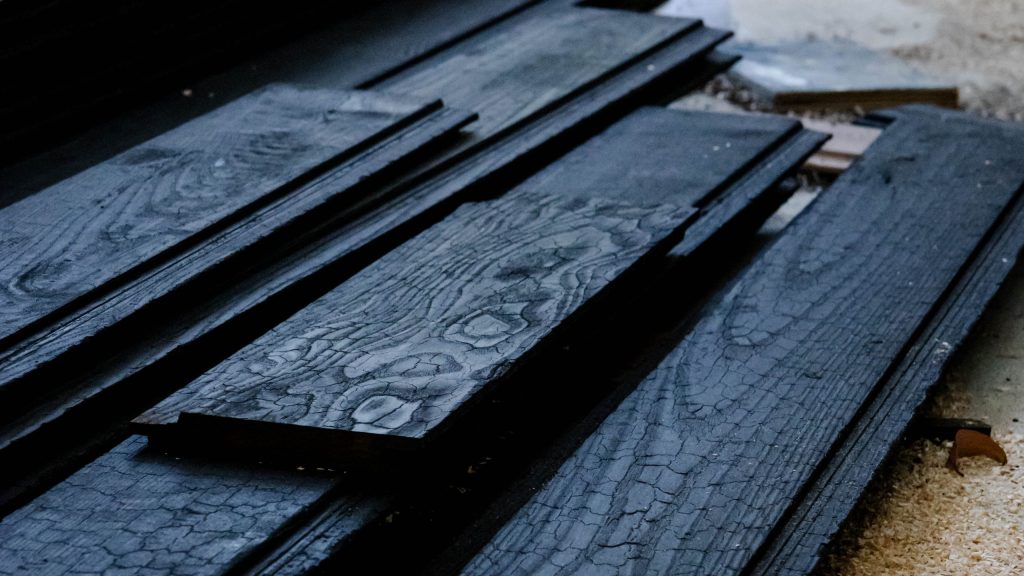
When selecting a board size, there are three primary things to keep in mind about cost:
- Generally, the same thickness board, regardless of the width, will be similar price per square metre (depending on the timber species).
- The thicker the board the higher the price per square metre. Often thicker boards are mixed with thinner boards to create a sequence.
- The narrower the board the more linear metres (LM) of timber you need to install per m2. This means installation costs increase by selecting a narrower board.
At Mortlock Timber, Shou Sugi Ban charred timber is available as 70x19mm and 120x19mm as standard, with customisable sizing available on request.
Applying a finish to the charred timber proves pivotal for longevity and appearance preservation. Mortlock Timber provides two popular finish options: the standard Cutek Black Ash oil for exterior use and the WOCA Exterior oil, slightly pricier and suitable for internal applications to prevent surface rubbing.
For comprehensive details on charred timber costs, including maintenance considerations and installation costs, Mortlock Timber invites direct contact for project-specific quotes.
What timber products do we provide in the Shou Sugi Ban technique?
At Mortlock Timber we offer dynamic charring solutions for two key systems: cladding and our timber screening.
Specifically tailored for our Trendplank timber cladding, Shou Sugi Ban charred timber is ideal for both walls and ceilings. We do not recommend using charred timber for decking or flooring. Charred Trendplank cladding can be provided in timber pieces ranging from 40×19 to 40×40 across all profiles excluding a centre groove profile.
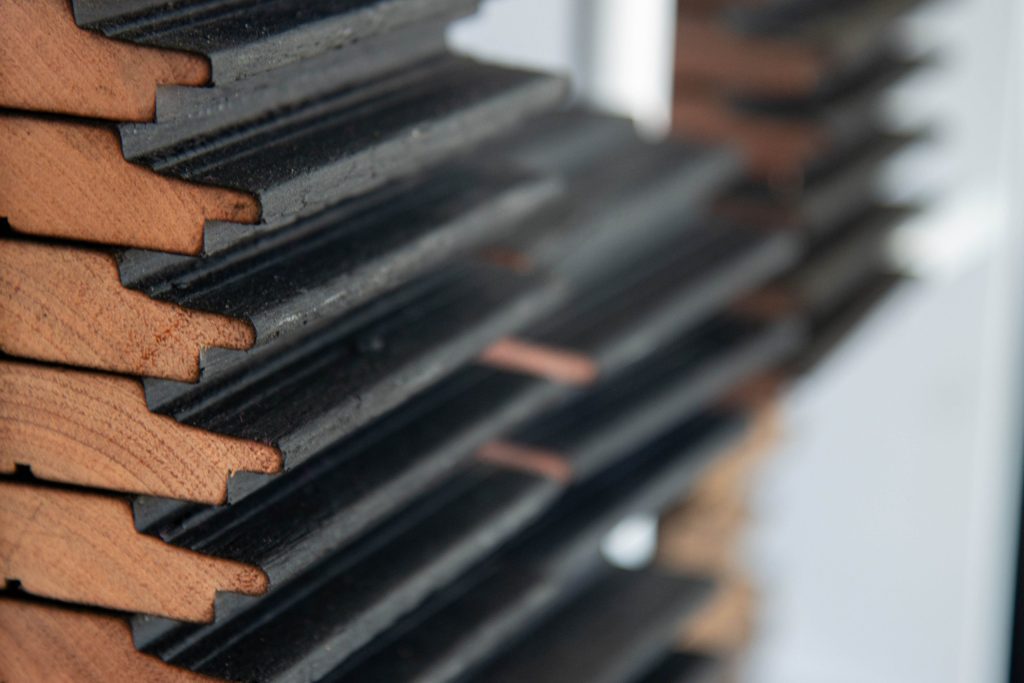
If you want to embrace a different approach to charred timber, inviting light play and texture into a design, our Shou Sugi Ban charred timber battens and screening can be provided up to 135x40mm.
Where you can use this Shou Sugi Ban charred timber.
You can use Shou Sugi Ban charred timber internally or externally. The key factors to consider before choosing your charred timber is the exposure to the weather and the potential charcoal rub off.
If using Shou Sugi Ban charred timber inside and away from the natural elements, we recommend using WOCA exterior oil to eliminate the charcoal rub off from getting on your hands and clothes. We supply the cladding pre-coated with the oil and recommend a second coat after installation to completely seal the timber.
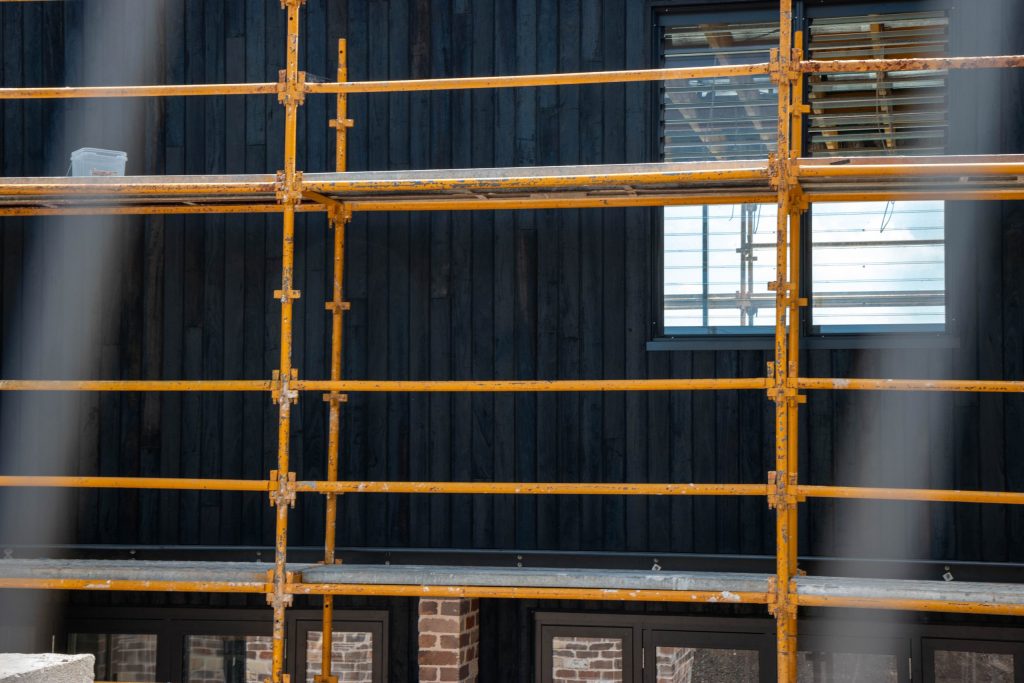
When it comes to using Shou Sugi Ban charred timber externally and once installed, the weather will wash the loose particles off the timber cladding and the charred, black rub-off eventually goes away. Cutek Extreme CD50 is the standard coating that we offer for Shou Sugi Ban charred timber and again, we supply the cladding pre-coated with the oil. Once installed, it is recommended to apply a second coat of oil. As the charred timber is coated with Cutek oil, it is recommended to apply a third coat, three to six months after installation. Following that, it is recommended to recoat the timber with Cutek up to every three to five years, depending on the level of weather the timber is exposed to.
We do not recommend using Shou Sugi Ban charred timber for any decking or flooring application.
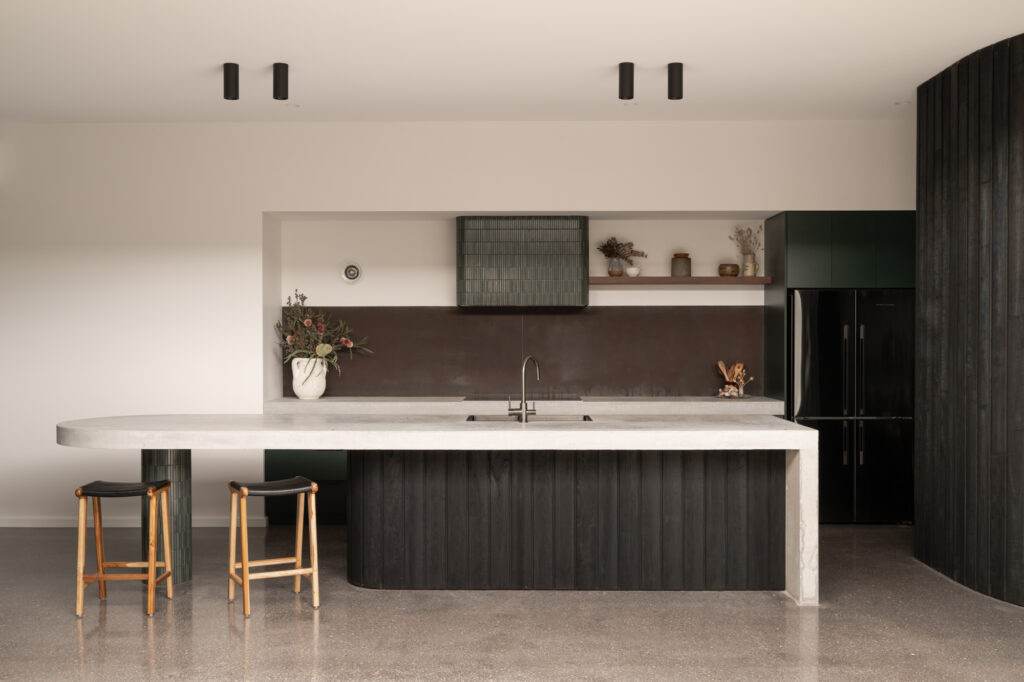
Your vision, our expertise.
At Mortlock Timber, we believe in the power of quality timber to transform a building. For over five years we’ve been refining and perfecting our Shou Sugi Ban process to ensure a consistent finish every time.
Shou Sugi Ban is a delicate process, requiring careful attention to detail. We manufacture in-house so that we can control the quality from start to finish. The result? We offer the finest quality timber cladding Shou Sugi Ban that can be used in a wide range of architectural applications.
Shou Sugi Ban is just one of the premier timber products we offer. At Mortlock Timber, we have timber features for every design. Leading architects across Australia love the beauty and durability of our timber products, and we know you will too. We encourage you to consult with our experienced team to ensure that your project stands the test of time.
To discuss your project, see pricing and receive samples, get in touch with us today! Call 1800 870 452 or request a quote.
To discuss your project, see pricing and receive samples, get in touch with us today! Call 1800 870 452 or request a quote.
View our pricing and product guide
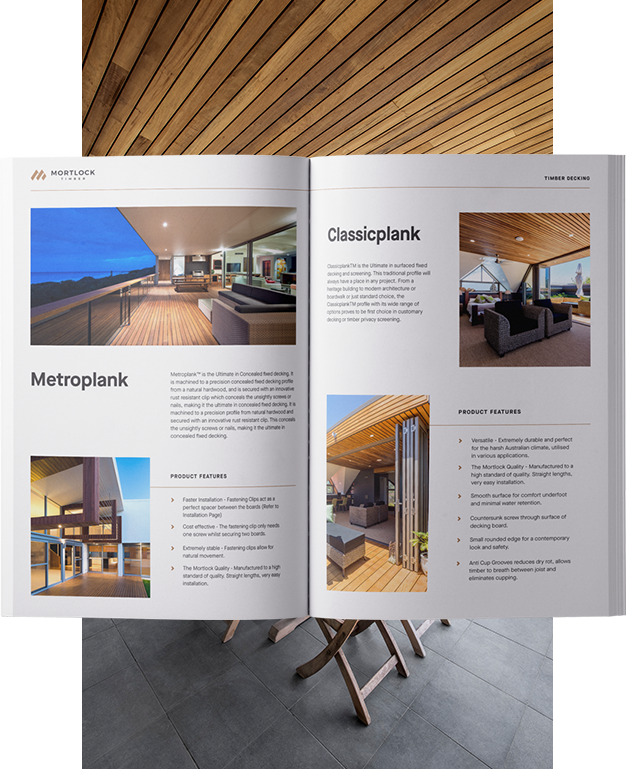
We are committed to bringing you timber products that add value and endure for years to come, even in heavy traffic and harsh weather conditions. We understand the value of efficiency when it comes to installation and keeping hardwood timber costs down. That’s why we’ve spent decades perfecting our designs to make them easier to handle, less wasteful and more efficient to install. This efficiency allows us to offer you premier products that are more cost-effective so that you can experience greater savings on timber wall costs, timber ceiling costs, timber cladding costs and timber decking costs.
Download our Pricing and Product Guide for our complete hardwood timber price list including timber decking prices, timber wall prices, timber ceiling prices and timber cladding prices.
